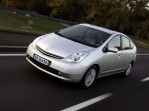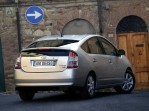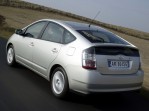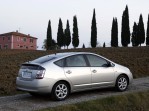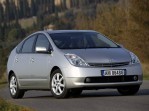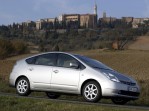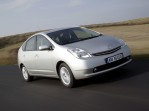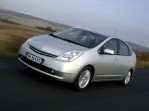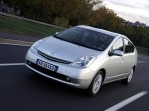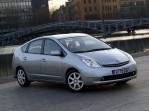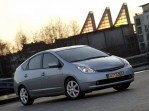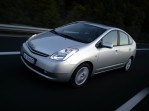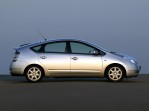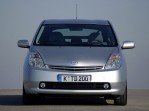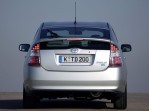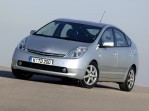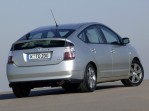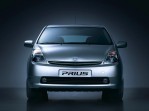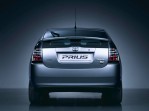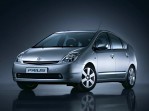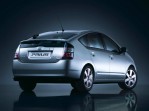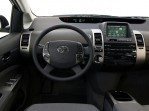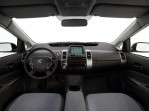Body style: Hatchback
Segment: Compact
Production years: 2006, 2007, 2008, 2009
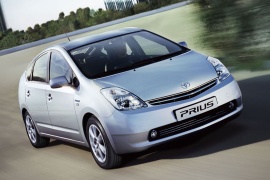 34 Photos
34 PhotosToyota added a mid-life cycle update for the second generation of the Prius in 2005, updating the car’s look and adding a few changes that made the car even more attractive to its customers.
The Prius was already a worldwide phenomenon in the automotive industry. Its revolutionary drivetrain and record-breaking fuel efficiency made customers forget about the bland exterior and unusual interior. Furthermore, more and more automakers started to reconsider their strategies and invested more money into hybrid technologies. However, Toyota needed to stay ahead of the competition and adapt. As a result, after launching the second generation of the Prius in 2003 for the 2004 model year in the U.S., the Japanese automaker returned with a refreshed version for the 2006 model year. At first sight, there were no significant changes, but a closer look revealed the car’s new perks, which made it an even more attractive vehicle.
Toyota didn’t want to dramatically change the car, so only a keen eye for detail could notice the changes made to the exterior of the Prius. At the front, the clear headlights were fitted with high-intensity discharge (HID) bulbs, offering a better nighttime driving experience. The bumper, on the other hand, wasn’t changed, and the same round fog lamps were kept on the lower side, albeit on all versions.
Thanks to its fastback-shaped bodywork, the Prius proved to be a very fuel-efficient vehicle. Its low drag resistance coefficient of 0.26 had its role in that. However, with only a few touches here and there and wider tires, the car could look better. So that’s what Toyota did to improve the car’s aspect. That resulted in a 0.29 drag coefficient, but customers didn’t care too much about that. A longer spoiler on the deck was part of the changes, and the LED taillights that lowered energy consumption were also included for the 2006 model year.
Inside, the most significant upgrade was for the infotainment screen, called Multi-Function Display by Toyota. The LCD had a higher resolution, and that change was highly appreciated by customers. In addition, the automaker included better materials for the cabin, including new upholstery. Another improvement was for the audio system, which gained an AUX-in plug, allowing customers to use their MP3 players to enjoy their favorite music on their travels. The car was already fitted with Bluetooth connectivity, albeit it didn’t support music streaming from mobile phones. Along with the 2006 model year, Toyota also introduced a reversing camera, which showed its image on the multi-function display placed atop the center stack. In the back, the 60/40 split-folding bench seat allowed customers to expand the trunk space.
The 2006 Prius also had significant technological upgrades, including automatic parking. This was offered as an option for specific countries and relied on parking sensors and an electric motor that turned the steering wheel. The driver had to operate the brakes and switch it from Drive to Reverse, though. Toyota offered the Prius with an improved Atkinson-cycle engine that emitted even lower emissions compared to its predecessor. In addition, it was helped by a 50 kW (67 hp) motor fed by a 106-cell NiMH battery pack.
TOYOTA Prius 2006, 2007, 2008, 2009
- 1.5L CVT (78 HP)
TOYOTA Prius
1.5L CVT (78 HP)
ENGINE SPECS - 1.5L CVT (78 HP) | |
|---|---|
| Cylinders: | L4 |
| Displacement: | 1460 cm3 |
| Power: | 57.4 KW @ 5000 RPM 78 HP @ 5000 RPM 77 BHP @ 5000 RPM |
| Torque: | 85 lb-ft @ 4000 RPM 115 Nm @ 4000 RPM |
| Fuel System: | Multipoint Injection |
| Fuel: | Hybrid |
PERFORMANCE SPECS | |
|---|---|
| Top Speed: | 105.6 mph (170 km/h) |
| Acceleration 0-62 Mph (0-100 kph): | 10.9 s |
TRANSMISSION SPECS | |
|---|---|
| Drive Type: | Front Wheel Drive |
| Gearbox: | Continuously Variable Transmission (CVT) |
BRAKES SPECS | |
|---|---|
| Front: | Ventilated Discs |
| Rear: | Discs |
TIRES SPECS | |
|---|---|
| Tire Size: | 195/55R16 |
DIMENSIONS | |
|---|---|
| Length: | 175.2 in (4450 mm) |
| Width: | 67.7 in (1720 mm) |
| Height: | 58.7 in (1491 mm) |
| Front/rear Track: | 59.4/58.3 in (1,509/1,481 mm) |
| Wheelbase: | 106.3 in (2700 mm) |
| Ground Clearance: | 4.9 in (124 mm) |
| Cargo Volume: | 14.4 cuFT (408 L) |
| Aerodynamics (Cd): | 0.26 |
WEIGHT SPECS | |
|---|---|
| Unladen Weight: | 2810.9 lbs (1275 kg) |
| Gross Weight Limit: | 3803 lbs (1725 kg) |
FUEL ECONOMY (NEDC) | |
|---|---|
| City: | 47 mpg US (5 L/100Km) |
| Highway: | 56 mpg US (4.2 L/100Km) |
| Combined: | 54.7 mpg US (4.3 L/100Km) |
| CO2 Emissions: | 104 g/km |




